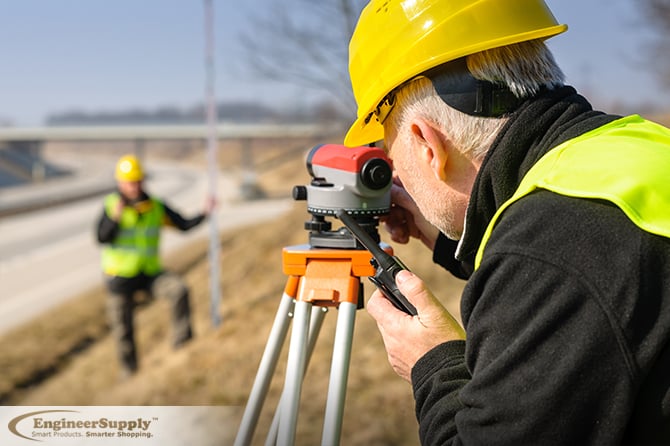The Ultimate Guide to Using an Auto Level
Welcome to the world of precision leveling! If you’ve ever wondered how builders create perfectly flat foundations or how roads maintain a consistent slope, the answer often involves a remarkable tool: the auto level. This instrument is a cornerstone of surveying, construction, and landscaping, ensuring that every measurement is accurate and every surface is true. While it might look complex, understanding and using an auto level is more straightforward than you think.
This guide is designed to walk you through everything you need to know. We’ll break down what an auto level is, how its internal magic works, and the steps to set it up for perfect results. You’ll learn how to read the measurements, understand the key terminology, and apply this tool across various projects. Whether you’re a student, a budding professional, or a DIY enthusiast tackling a big project, this comprehensive resource will help you master the auto level and bring a new degree of precision to your work. Let’s get started on your journey to flawless leveling.
What Exactly Is an Auto Level?
An auto level, also known as an automatic level or self-leveling level, is a professional optical instrument used to establish or verify points in the same horizontal plane. Think of it as a highly advanced and incredibly precise spirit level. Its primary job is to provide a perfectly horizontal line of sight, which you can then use to measure differences in height between various points. This makes it indispensable for tasks like setting foundation forms, establishing proper drainage grades, and ensuring floors are perfectly flat.
The key feature that sets an auto level apart from older instruments like the dumpy level is its internal self-leveling compensator. After you perform a rough leveling of the instrument using its built-in bubble vial, this internal mechanism automatically fine-tunes the line of sight to be perfectly horizontal. This saves a massive amount of time in the field and significantly reduces the chance of human error, as it eliminates the need for constant, meticulous adjustments. This functionality makes the modern automatic level a favorite among surveyors, engineers, and construction professionals for its speed, reliability, and accuracy.
The Magic Inside: How the Self-Leveling Compensator Works
The “auto” in auto level comes from its ingenious internal compensator. This is a system of prisms and mirrors suspended by wires or bearings, acting like a pendulum. When you set up the instrument and get it roughly level using the circular bubble, gravity takes over. The compensator swings freely until it settles into a position that refracts the line of sight, making it perfectly horizontal, even if the main telescope body is slightly tilted. This happens automatically and almost instantaneously.
This mechanism is magnetically dampened to stop it from oscillating endlessly, allowing you to take a stable reading quickly. The beauty of this system is its resilience; as long as the instrument remains within its designated “compensation range” (typically a slight tilt of about ±15 arc-minutes), the compensator will continue to provide a true level line. This is a huge leap forward from older manual levels, which required the user to painstakingly center a highly sensitive bubble before every single reading. The automatic compensator in an auto level streamlines the entire workflow, enhancing both speed and accuracy on the job site.
Key Parts and Components of an Auto Level
To use an auto level effectively, it’s essential to familiarize yourself with its main components. While designs vary slightly between manufacturers, most models share a common anatomy. Understanding each part’s function will make setup, operation, and troubleshooting much easier. Let’s take a closer look at the key elements that make up this precise leveling instrument.
- Telescope: This is the main optical component you look through. It houses the objective lens (at the far end), the eyepiece (where you look), and the crosshairs (also called reticles) used for sighting the leveling rod.
- Focusing Knob: Typically a large knob on the side of the telescope, this is used to bring the image of the leveling rod into sharp focus. A clear image is crucial for accurate readings.
- Eyepiece Adjustment: A smaller ring around the eyepiece itself, this is used to focus the crosshairs. You should adjust this before focusing on the rod to ensure the crosshairs are perfectly sharp for your eyes.
- Circular Bubble Vial (Bull’s-Eye Bubble): This is your primary tool for rough leveling. It’s a small, circular glass vial with a circle in the center. Your goal during setup is to adjust the leveling screws to get the bubble inside this circle.
- Leveling Screws (Foot Screws): These are usually three adjustable screws on the base of the instrument. You turn these to tilt the instrument and center the bubble in the circular vial.
- Base Plate: This is the bottom part of the auto level that connects to the tripod. It supports the entire instrument.
- Horizontal Circle: A graduated ring marked in degrees (0 to 360) at the base of the instrument. It allows you to measure horizontal angles between two points, which is useful for layout tasks.
- Compensator: The internal mechanism, hidden from view, that automatically fine-tunes and maintains a level line of sight.
Different Types of Leveling Instruments
While this guide focuses on the auto level, it’s helpful to understand where it fits within the broader family of leveling instruments. Each type has its own characteristics, applications, and level of technology. Knowing the differences can help you appreciate why the automatic level is so popular and also recognize situations where another tool might be more suitable.
The Classic Dumpy Level
The dumpy level is the manual predecessor to the auto level. It is a very robust and simple optical level, but it requires significant skill to operate. With a dumpy level, the user must manually and precisely center a highly sensitive tube bubble before every single reading to ensure the line of sight is perfectly horizontal. This process is time-consuming and prone to error if not done with extreme care. While they are still used for training purposes and can be very accurate in experienced hands, they have been largely replaced on modern job sites by the more efficient automatic level. The main advantage of the dumpy level was its simple construction, making it durable and less prone to mechanical failure from its compensator.
The Modern Digital Auto Level
The digital auto level represents the next evolution in leveling technology. It functions on the same principle as a standard optical auto level, complete with an automatic compensator. However, it removes the need for the user to manually read the numbers on the leveling rod. Instead, it uses a special bar-coded staff (leveling rod). The instrument’s internal processor reads the bar code pattern and digitally displays the height and distance on an LCD screen. This eliminates reading and recording errors, drastically increases speed, and allows for onboard data storage. While more expensive, digital levels are the go-to choice for high-accuracy projects or jobs that require a large volume of readings, as they reduce operator fatigue and minimize mistakes.
The Versatile Laser Level
A laser level is a different kind of tool altogether. Instead of a single line of sight that you look through, it projects a visible or invisible beam of laser light to create a constant level line or point. A basic laser level might project a single dot on a wall, while more advanced rotary lasers can spin rapidly to cast a 360-degree horizontal or vertical plane across an entire work area. These are extremely popular for interior work like installing cabinets or drop ceilings, and for exterior site grading when used with a laser detector mounted on a rod. While they are excellent for establishing a reference plane, a traditional auto level is often preferred for differential leveling—the process of precisely measuring height differences between specific points.
Setting Up Your Auto Level: A Step-by-Step Guide
Proper setup is the foundation of accurate measurements. Rushing this process will lead to errors that compromise your entire project. The goal is to create a stable, roughly level platform for the instrument so its internal compensator can take over and do the fine-tuning. Follow these steps carefully every time you set up your auto level.
1. Position the Tripod Securely
First, choose a stable location for your setup. Avoid soft ground, asphalt on a hot day, or areas with heavy vibrations from machinery. Extend the tripod legs so the tripod head is at a comfortable height for you—typically around chin level. Spread the legs out in a wide, stable triangle. On soft ground, press the pointed feet firmly into the earth. On hard surfaces like concrete, make sure the legs are spread wide enough to prevent any chance of slipping. A wobbly tripod is the number one enemy of accurate leveling. The tripod head should be as close to level as you can get it by just eyeballing it. This will make the next steps much easier.
2. Mount and Secure the Auto Level
Carefully take the auto level out of its case and place it on top of the tripod head. Most tripods and levels use a large-threaded mounting screw on the tripod that fits into the base of the level. While holding the instrument securely with one hand, tighten this screw with your other hand until the level is firmly attached to the tripod. Don’t overtighten it, but make sure it is snug and doesn’t wobble. Once mounted, the instrument is still delicate, so avoid bumping the tripod legs. A slight knock can be enough to throw off your readings and require you to start the leveling process all over again.
3. Perform a Rough Leveling with the Bubble Vial
Now, you will use the three leveling screws (foot screws) at the base of the auto level to center the bubble in the circular vial. This is the most hands-on part of the setup.
- Start by turning two of the leveling screws simultaneously in opposite directions (both inward or both outward). Watch the bubble. This will move the bubble along a line parallel to those two screws. Center it along that axis.
- Next, turn only the third screw. This will move the bubble along a line perpendicular to the first two screws. Turn it until the bubble is perfectly in the center of the black circle.
- You may need to repeat these steps a couple of times to get it perfect. Your goal is to get the bubble as close to the center as possible. Once the bubble is inside the circle, the internal compensator can take over and create a perfectly level line of sight.
How to Read a Leveling Rod
Once your auto level is set up, your next task is to take a reading. This involves looking through the telescope at a special measuring stick called a leveling rod (or grade rod). These rods are marked with clear, easy-to-read numbers, but it takes a little practice to interpret them correctly. Most rods used in the United States are marked in feet, tenths of a foot, and hundredths of a foot—not inches.
When you look through the eyepiece, you’ll see the magnified image of the rod, overlaid with the instrument’s crosshairs. The primary horizontal crosshair is what you use to take the measurement. The number you need to record is the value on the rod that this horizontal line is crossing. For example, you might see a large number ‘4’, indicating you are in the 4-foot section of the rod. Above that, you’ll see smaller markings for tenths of a foot (e.g., 4.1, 4.2, 4.3). Between each tenth are smaller tick marks or blocks representing hundredths of a foot. You must estimate the final digit. If the crosshair is halfway between 4.25 and 4.26, your reading would be 4.255. This final digit is an estimation, but with practice, it becomes very consistent.
Understanding Basic Surveying Terminology
To use an auto level correctly and communicate with others on a project, you need to know the language of leveling. These terms are fundamental to the process and represent the core concepts of determining elevations.
- Benchmark (BM): A benchmark is a point of known elevation. This is your starting reference. It could be a permanent survey marker set in concrete, the top of a fire hydrant, or a temporary point you establish for your project, like a stake in the ground. All your subsequent measurements will be relative to this starting point.
- Backsight (BS): This is the first reading you take after setting up your auto level. You place the leveling rod on your benchmark and take a reading. This reading is called the backsight. It is used to determine the height of your instrument.
- Height of Instrument (HI): The height of instrument is the elevation of the line of sight through your level’s telescope. You calculate it with a simple formula: HI = Benchmark Elevation + Backsight Reading. Once you know your HI, you can use it to determine the elevation of any other point you can see from that setup.
- Foresight (FS): A foresight is any reading you take after the backsight. Each foresight reading is taken on a point of unknown elevation. By subtracting the foresight reading from your HI, you can calculate the elevation of that new point. The formula is: New Point Elevation = HI – Foresight Reading.
- Turning Point (TP): When you need to move your auto level to a new location to continue a line of levels (for example, if a hill is in the way), you use a turning point. This is a temporary, stable point that you establish. The last reading from your old setup is a foresight onto the TP. Then, you move your instrument to a new location, and the first reading from the new setup is a backsight onto that same TP. This allows you to transfer your elevation reference accurately from one setup to the next.
Field Procedures: The Two-Peg Test
How do you know if your auto level is actually accurate? Over time, due to bumps and vibrations, the line of sight can become misaligned with the bubble vial, introducing a collimation error. The two-peg test is a simple and essential field procedure that every operator should know how to perform to check for and correct this error. It ensures that the level line your instrument is providing is true.
Performing the Test
- Find a relatively flat piece of ground and place two stakes (pegs) about 100 to 150 feet apart. Call them Peg A and Peg B.
- Set up your auto level exactly in the middle between the two pegs. Take a reading on the rod at Peg A, and then a reading on the rod at Peg B. Because you are exactly in the middle, any error in your instrument will be the same for both readings, so it will cancel out. The difference between these two readings is the true difference in elevation.
- Now, move the instrument. Set it up very close to Peg A (about 10 feet away). Take another reading on Peg A and another on Peg B.
- Calculate the apparent difference in elevation from this second setup. Compare it to the true difference you found in the first setup. If they match, your auto level is in perfect adjustment. If they don’t match, you have a collimation error, and the instrument needs adjustment. The manufacturer’s manual will provide instructions on how to adjust the crosshairs to correct for this error.
Common Applications for an Auto Level
The versatility of the auto level makes it a critical tool in a wide range of industries and projects. Its ability to quickly and accurately establish a horizontal plane and measure elevation differences is fundamental to ensuring quality and adherence to design specifications. From massive construction sites to backyard landscaping projects, this instrument plays a vital role.
Construction and Building Layout
In construction, an auto level is used from the very beginning. It’s essential for excavating basements to the correct depth and for setting up the foundation forms to ensure they are perfectly level. A level foundation is critical for the structural integrity of the entire building. As construction progresses, the instrument is used to check the heights of columns and walls, ensure floors are flat, and establish elevations for installing windows and doors. Any task that requires a consistent height reference across a building site will likely involve an automatic level.
Landscaping and Drainage
Proper drainage is one of the most important aspects of landscaping. Water must be directed away from buildings and prevented from pooling in unwanted areas. An auto level is the perfect tool for this job. Landscapers use it to set the correct grade (slope) for lawns, patios, and retaining walls. By taking readings at various points, they can ensure a gentle, consistent slope that effectively manages water runoff. This prevents soil erosion, basement flooding, and soggy yards. Without precise grade checking, a landscaping project can quickly turn into a drainage nightmare. Some readers might find useful tips on similar precision-requiring tasks over at https://versaillesblog.com/.
Roadwork and Paving
Have you ever wondered how roads are built with such precise slopes for drainage and smooth transitions for curves? The auto level (and more advanced tools like total stations) is key. Road crews use it to set grade stakes along the edge of a future road, which guide the heavy machinery operators. These stakes tell the grader operator how much to cut (remove soil) or fill (add soil) to achieve the design elevation. This process, known as grade checking, is repeated for the sub-base, base course, and final asphalt or concrete surface to ensure the road is smooth, safe, and drains properly. An inaccurate grade can lead to puddles on the road, creating hazardous driving conditions.
Safety and Maintenance Best Practices
An auto level is a precision instrument, and treating it with care is paramount to its longevity and accuracy. Proper safety and maintenance habits will protect your investment and ensure reliable performance for years. Ignoring these practices can lead to costly repairs or, worse, inaccurate measurements that ruin a project.
Handling and Transport
Always carry the auto level in its protective case. The case is specifically designed with padding to absorb shocks and protect the sensitive internal compensator. Never transport the instrument loose in a vehicle where it can slide around and get banged up. When mounting it on the tripod, hold it securely with one hand while tightening the mounting screw. When moving the setup, even for a short distance, it’s best practice to take the instrument off the tripod and carry them separately. If you must move the tripod with the level attached, pull the tripod legs together and carry it over your shoulder in a vertical position, not horizontally. This minimizes stress on the compensator and mounting screw.
Cleaning and Storage
Keeping your auto level clean is simple but important. After use, especially in dusty or wet conditions, wipe down the instrument body with a soft, dry cloth. The most critical part to clean is the objective lens. Use a lens brush to whisk away any loose dust or grit first. Wiping a gritty lens can scratch the coating. After brushing, you can use a proper lens cleaning cloth or lens paper to gently wipe away any smudges or fingerprints. Never use harsh chemicals or abrasive materials. When you’re done for the day, always store the instrument in its case with the latches secured. Store the case in a dry, temperature-controlled environment. Avoid leaving it in a hot truck or a damp shed for extended periods.
Troubleshooting Common Issues and Errors
Even with proper care, you may occasionally run into issues while using your auto level. Most problems are minor and can be resolved quickly with a bit of troubleshooting. Understanding the common sources of error will also help you develop better field techniques to avoid them in the first place.
Instrument and Setup Errors
Many problems originate from the setup itself. If you’re getting inconsistent readings, the first thing to check is your tripod. Is it on stable ground? Are the leg clamps tight? Is the auto level securely mounted to the tripod? A wobbly setup is a common cause of frustration. Another issue could be that the compensator is “stuck.” This can happen if the instrument receives a hard jolt. Sometimes, lightly tapping the side of the instrument with the palm of your hand can free it. If your bubble vial is difficult to center or won’t stay centered, it might need adjustment or re-calibration, which can be done in a workshop. Finally, always perform the two-peg test periodically to check for collimation error, as this is a hidden error that will make all your measurements incorrect.
Environmental and Human Errors
The environment can also introduce errors. Heat shimmer on a hot day can cause the image of the leveling rod to appear wavy, making it difficult to get a precise reading. To combat this, try to keep your sight distances shorter. Wind can cause the instrument to vibrate, so using a windbreak or avoiding work on extremely windy days is advisable. Human error is also a significant factor. Misreading the rod, writing down the wrong number (transcription error), or simple math mistakes can all lead to problems. This is why it’s good practice to double-check your readings and calculations. Having a second person check your work can also be beneficial. Another subtle error is the rod not being held perfectly plumb (vertical), which can be solved by using a rod bubble.
A Buyer’s Guide to Choosing an Auto Level
Purchasing an auto level is a significant investment, so it’s important to choose the right one for your needs. There’s a wide range of models available, from entry-level units for simple projects to high-precision instruments for professional surveying. Consider these key factors to make an informed decision.
Key Specifications to Consider
- Magnification: This is typically expressed as a number like 24x, 28x, or 32x. Higher magnification allows you to take readings from farther away and see the rod markings more clearly. For general construction, 24x or 28x is usually sufficient. For longer-distance work, 32x is better.
- Accuracy: This is often stated as the standard deviation for a 1-km double-run leveling (e.g., ±1.5 mm). For most construction and landscaping, an accuracy of ±2.0 mm to ±2.5 mm is perfectly adequate. Higher-accuracy models are more expensive and are needed for precise engineering projects.
- IP Rating: The Ingress Protection (IP) rating tells you how well the instrument is sealed against dust and water. A rating like IP54 means it’s protected against dust and water splashes. A higher rating like IP66 means it’s fully dust-tight and can withstand powerful water jets. Choose a rating appropriate for the conditions you’ll be working in.
- Compensator Type and Range: Most modern levels use a magnetically dampened wire-hung compensator. Check the compensator’s working range (e.g., ±15′). A wider range means the instrument can handle being slightly more out of level and still give an accurate reading.
Comparing Auto Level Types
|
Feature |
Optical Auto Level |
Digital Auto Level |
Laser Level (Rotary) |
|---|---|---|---|
|
Typical Magnification |
20x – 32x |
24x – 32x |
Not Applicable |
|
Typical Accuracy |
±1.5 mm to ±2.5 mm per km |
±0.7 mm to ±1.5 mm per km |
±1.5 mm to ±3 mm at 30m |
|
How It’s Read |
User visually reads a standard grade rod through a telescope. |
Instrument electronically reads a special bar-coded rod. |
User/detector finds the position of a projected laser beam on a rod. |
|
Best Use Cases |
Differential leveling, grade checking, construction layout, landscaping. |
High-accuracy leveling, large volume of readings, minimizing human error. |
Establishing a constant level plane over a large area, interior layout, site grading. |
Warranty and Brand Reputation
Finally, consider the manufacturer’s warranty and reputation. Brands like Topcon, Sokkia, Leica, and Spectra have a long-standing history of producing high-quality surveying instruments. A good warranty provides peace of mind and protection for your investment. It’s also worth checking if there are local service centers that can calibrate or repair your instrument if needed. Reading reviews and talking to other professionals can give you valuable insight into the reliability and user experience of different auto level models.
Productivity Tips for Using an Auto Level
Becoming proficient with an auto level is about more than just knowing the steps; it’s about developing an efficient workflow. These tips will help you save time, improve accuracy, and get the most out of your instrument on the job site.
- Practice a Smooth Setup: Your speed starts with the setup. Practice setting up the tripod and leveling the instrument until it becomes second nature. A fast, efficient setup can save you significant time over the course of a day with multiple instrument moves.
- “Balance Your Sights”: Whenever possible, try to set up your auto level roughly equidistant from your backsight and foresight points. This technique, known as balancing your sights, helps to cancel out any potential collimation error in the instrument as well as the effects of the Earth’s curvature on very long sights.
- Keep Meticulous Field Notes: Use a proper field book and develop a clear, consistent system for recording your readings. Record the station, backsight (BS), height of instrument (HI), foresight (FS), and elevation for each point. Clear notes prevent confusion and make it easy to check your work for mathematical errors.
- Use a Rod Bubble: The person holding the leveling rod (the rod person) has a critical job. If the rod is not held perfectly plumb (vertical), the reading will be incorrect (it will always be higher than the true reading). A small, inexpensive rod bubble attaches to the leveling rod and helps the rod person ensure it is perfectly vertical for every measurement.
- Communicate Clearly: Use clear hand signals between the instrument operator and the rod person. Simple signals for “move right/left,” “hold steady,” “all done,” or “move to a turning point” prevent shouting across a noisy job site and improve efficiency. A good workflow depends on teamwork.
Key Takeaways
Mastering the auto level is a valuable skill that brings precision and professionalism to any construction, landscaping, or engineering project. Here are the most important points to remember:
- Function: An auto level is an optical instrument used to create a perfectly horizontal line of sight for measuring elevation differences. Its key feature is the internal automatic compensator, which saves time and improves accuracy.
- Setup is Critical: A stable tripod and a carefully leveled instrument are non-negotiable. Rushing the setup process is the fastest way to get inaccurate results.
- Know the Language: Understanding terms like Benchmark (BM), Backsight (BS), Height of Instrument (HI), and Foresight (FS) is essential for performing leveling calculations correctly.
- Check Your Instrument: Regularly perform the two-peg test to check for and correct collimation error. A properly calibrated instrument is a reliable instrument.
- Applications are Broad: From setting foundations and checking grades for drainage to ensuring roads are smooth, the auto level is a versatile and indispensable tool across many industries.
- Care and Maintenance: Treat your auto level like the precision instrument it is. Proper handling, cleaning, and storage will ensure it provides accurate readings for many years.
Frequently Asked Questions (FAQ)
1. What is the main difference between a dumpy level and an auto level?
The primary difference lies in how they achieve a level line of sight. A dumpy level is fully manual; the operator must meticulously center a sensitive bubble vial before every single shot to ensure the telescope is level. An auto level, however, contains an internal pendulum-based compensator. After a quick rough leveling, this compensator automatically fine-tunes the line of sight to be perfectly horizontal, saving significant time and reducing the potential for human error on the job site.
2. How often should I calibrate my auto level?
It’s good practice to perform a quick check, like the two-peg test, every week or two if you use the instrument frequently. You should always check it if it has been dropped or has received a significant jolt. For official calibration by a certified technician, following the manufacturer’s recommendation is best, which is typically once a year. A proper calibration ensures your auto level meets its stated accuracy specifications and gives you confidence in your measurements.
3. Can I use an auto level to measure distances?
Yes, you can estimate distances using an auto level. When you look through the eyepiece, you’ll see two shorter horizontal lines above and below the main crosshair. These are called stadia lines. To find the distance, take the reading at the top stadia line and subtract the reading from the bottom stadia line. Then, multiply that difference by 100. This method, called stadia measurement, provides a good estimate of the horizontal distance to the rod, which is useful for quick checks.
4. What does the “x” mean in 24x or 32x magnification for an auto level?
The “x” number refers to the magnification power of the telescope. A 24x auto level makes an object appear 24 times closer than it is to the naked eye, while a 32x model makes it appear 32 times closer. Higher magnification allows you to see the leveling rod more clearly from a greater distance, which can mean fewer instrument setups are needed on a large site. However, higher magnification also makes the instrument more sensitive to vibrations.
5. Is an auto level waterproof?
Most modern auto levels are water-resistant, but not fully waterproof. Their resistance is indicated by an IP (Ingress Protection) rating, such as IP54. The ‘5’ means it’s protected against most dust, and the ‘4’ means it can withstand splashes of water from any direction. This is sufficient for working in light rain. However, you should never submerge an auto level in water. Always wipe the instrument dry with a soft cloth before storing it back in its case after use in wet conditions.
6. What is the difference between a turning point and a benchmark?
A benchmark is a permanent or semi-permanent point of known elevation that serves as the starting reference for your entire project. A turning point, on the other hand, is a temporary point used to move the auto level and continue a line of levels. It acts as a pivot. Its elevation is calculated from one setup, and then it is used as a reference to calculate the instrument height for the next setup. It’s a temporary link in the measurement chain.
7. Why can’t I get the crosshairs and the rod image in focus at the same time?
This is a common issue called parallax error. It happens when the crosshairs are not focused correctly for your specific eyesight. To fix this, first, point the telescope at a plain, bright background like the sky. Turn the eyepiece focusing ring until the crosshairs are perfectly black and sharp. Lock it in that position. Then, use the main focusing knob to bring the image of the leveling rod into focus. Once you’ve set the eyepiece for your eye, you shouldn’t need to adjust it again.
8. Can one person operate an auto level alone?
While it is technically possible for one person to use an auto level by setting up the instrument and then walking back and forth to the rod, it is extremely inefficient and impractical for most tasks. Leveling is fundamentally a two-person job: one person to operate the instrument (the instrument operator) and one person to hold the leveling rod at the various measurement points (the rod person). This teamwork allows for a fast, efficient, and accurate workflow.
Conclusion
The auto level stands as a testament to brilliant yet simple engineering—a tool that has become an indispensable partner for anyone serious about precision. We’ve journeyed through its core functions, from the magic of the internal compensator to the practical steps of setting it up and taking a reading. By understanding its components, learning the language of leveling, and embracing best practices for its use and care, you are now equipped to tackle projects with a new level of confidence and accuracy.
Remember that proficiency comes with practice. The more you use your auto level, the more intuitive the process will become. Whether you are laying a foundation, grading a landscape for perfect drainage, or setting elevations for a new road, this reliable instrument will be your guide to getting it right the first time. Embrace the precision it offers, and you’ll find it one of the most valuable and rewarding tools in your collection.













Post Comment